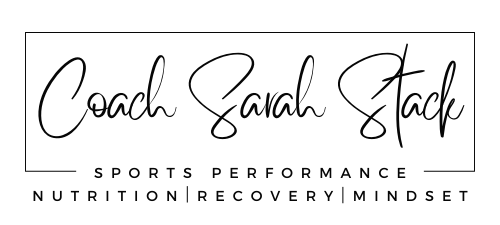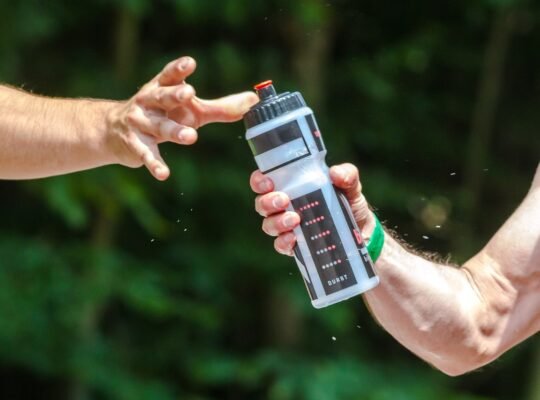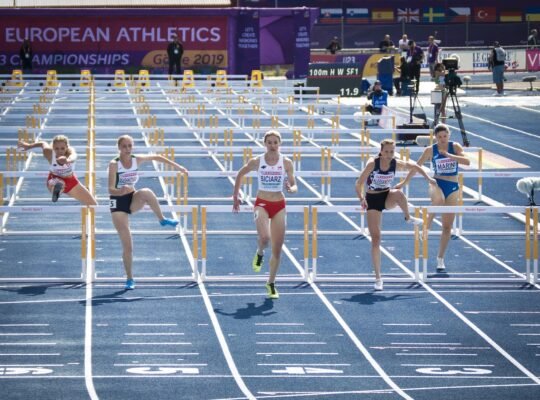As coaches and parents of young female athletes, staying informed about conditions that can affect their health and performance is crucial. Today, we’re taking an introductory look at the Female Athlete Triad, a serious and interconnected set of conditions that can impact teen girl athletes. While I’m not a sports medicine doctor, as a coach, I’m on the front lines and in the position to recognize when something might be amiss. Early recognition can be key to preventing the full-blown triad from developing.
What is the Female Athlete Triad?
The Female Athlete Triad describes a relationship between three distinct but connected conditions that can occur in female athletes. While it can affect females at any age, our focus today is on its impact on teenage female athletes. These three conditions are:
- Low Energy Availability (LEA)
- Menstrual Dysfunction
- Low Bone Mineral Density
The triad typically arises when an athlete doesn’t consume enough fuel to meet the demands she places on her body through training and daily life. Each of these conditions has the potential to cause lasting damage independently, making their combination particularly concerning.

Understanding Each Component of The Female Athlete Triad
Let’s break down each of these interconnected conditions:
1. Low Energy Availability (LEA)
Low Energy Availability (LEA) is arguably the driving factor behind the Female Athlete Triad and is often the first condition of the three to develop. The good news is that recognizing and addressing the signs of LEA can prevent the full triad from taking hold.
LEA occurs when an athlete isn’t consuming enough calories to fuel both her intense athletic activity and her body’s basic metabolic functions. It’s important to understand that the body prioritizes fueling activity with the highest metabolic demand – which is exercise and training – before it fuels basic bodily needs. This means if there isn’t enough fuel, the body’s essential functions suffer.
The first step in addressing LEA is simply to ensure the athlete is consuming enough total calories. Only after this baseline is met can the focus turn to optimizing nutrition for her activity level.
Signs of Low Energy Availability:
- Early Signs: Fatigue, unexplained weight loss, difficulty building muscle despite training, mood swings, restrictive eating patterns, and frequent illness. (Note: some of these can be easily dismissed as typical “teenage girl” behaviors, highlighting the importance of looking at the whole picture.)
- Long-Term Impacts: Decreased muscular strength, reduced endurance, impaired coordination and reaction time (all of which negatively impact athletic performance), hormonal imbalances, impaired growth, and a slowed metabolism (as the body tries to conserve energy). A slower metabolism can manifest as fatigue, difficulty staying warm, and a lower resting heart rate.
Intentional vs. Unintentional LEA:
LEA can be:
- Intentional: This includes calorie restriction aimed at weight loss, body image issues, or an underlying eating disorder.
- Unintentional: This can occur when an athlete simply doesn’t realize the high caloric demands of her activity level, or when she’s going through a growth spurt and her body requires significantly more fuel.
Addressing LEA, especially the nutritional aspects, requires professional guidance from a registered dietitian, who is qualified to interpret individual needs and prescribe appropriate meal plans.
2. Menstrual Dysfunction
If LEA goes unnoticed or unaddressed, menstrual dysfunction is often the next component to appear. This involves a disruption of the hormones that regulate the menstrual cycle, leading to irregular periods or, in more severe cases, the complete loss of periods (known as amenorrhea).
A regular menstrual period is a key indicator of health. Irregularities or amenorrhea are serious red flags. This can be a sensitive topic for teenage girls, so parents need to be particularly aware, especially if other signs of LEA are present.
Health Impacts of Menstrual Dysfunction/Amenorrhea:
- Physical: Low bone mineral density (which we’ll discuss next), future fertility issues, compromised cardiovascular health due to low estrogen, other conditions that result from hormonal imbalances like acne or excess facial hair.
- Psychological: Stress, anxiety, self-consciousness, emotional concerns about fertility, and feelings of being “different” or embarrassed.
3. Low Bone Mineral Density
Low bone mineral density is the third and often most severe component of the Female Athlete Triad. Reduced estrogen levels (due to menstrual dysfunction) combined with inadequate calcium and vitamin D intake (due to malnutrition from LEA) lead to weakened bones.
Impacts of Low Bone Mineral Density:
- Short-Term (for youth athletes): Increased susceptibility to stress fractures and other types of fractures (e.g., from falls), bone pain, and in severe cases decreased height due to vertebral fractures.
- Long-Term: Can lead to osteopenia (low bone mineral density) or osteoporosis (brittle bones) later in life. Adolescence is a crucial time for building bone mass, and missing this critical window due to the Female Athlete Triad can have lifelong consequences for bone health.
A DEXA scan is used to measure bone mineral density. If an athlete has a history of stress fractures or amenorrhea, asking a pediatrician about ordering a DEXA scan might be a necessary step to assess bone health.

Why Teenage Girls are Particularly Vulnerable
Teenage girls are especially susceptible to the Female Athlete Triad for several reasons:
- Rapid Growth and Development: Adolescence is a period of intense physical changes, demanding significant energy to fuel growth, bone development, and hormonal shifts.
- Dietary Habits: Teenagers often have less-than-ideal dietary habits, skipping meals or relying on nutritionally poor “junk food,” contributing to LEA.
- Body Image Concerns: The pervasive desire to be thin, fueled by social media and other influences, can lead to intentional disordered eating patterns and calorie restriction.
- Lack of Nutritional Knowledge: Many teenagers simply lack the understanding of how to properly fuel their bodies for their activity levels. This is why education about performance-based nutrition is so vital.
What Can Parents and Coaches Do?
If you suspect any signs or symptoms of LEA or the Female Athlete Triad in a female athlete, here’s how to act:
- Coaches: Your priority is the athlete’s health. Inform the parent about your concerns and suggest they contact their child’s pediatrician. While maintaining client trust is important, health concerns supersede coach-athlete confidentiality.
- Parents: If a coach approaches you, or you’ve noticed symptoms yourself, start by contacting your child’s pediatrician.
The Treatment Team:
Treating the Female Athlete Triad often involves a multi-disciplinary approach, typically including:
- Pediatrician/Sports Medicine Doctor: To diagnose, interpret blood work, and oversee medical treatment.
- Registered Dietitian: Crucial for providing tailored nutritional counseling and meal plans to increase calorie intake and address deficiencies.
- Strength and Conditioning Coach/Trainer: To design safe and effective programs focusing on weight-bearing exercises and jump training to help increase bone mineral density.
- Mental Health Professional: A psychologist or counselor may be necessary if body image issues or eating disorders are present.
The primary goals of treatment are to increase calorie intake, restore regular menstrual periods, and improve bone mineral density through proper nutrition and exercise.

Parents’ and Coaches’ Role: Education, Modeling, and Conversation
Education is truly the key to preventing the Female Athlete Triad. As parents and coaches, we must:
- Be Informed: Understand the signs, symptoms, and impacts of the triad.
- Model Healthy Behaviors: Be mindful of how we eat and how we talk about our own bodies in front of young athletes. They learn from our actions and our words.
- Emphasize Health Over Skinniness: Counter societal pressures by promoting the value of health and strength (and performance) over a focus on thinness.
- Normalize Uncomfortable Conversations: Talk openly and factually about nutrition, hormones, and menstrual health. These girls are smart and capable of understanding complex information. Avoiding these topics because they make us uncomfortable does a disservice to them.
Our job is to educate and empower young girls to understand how their bodies work and to encourage them to communicate how their bodies feel. By doing so, we can guide them toward lifelong health and peak performance.
What are your thoughts on supporting young female athletes through these critical health issues? Share your experiences and advice in the comments below!







